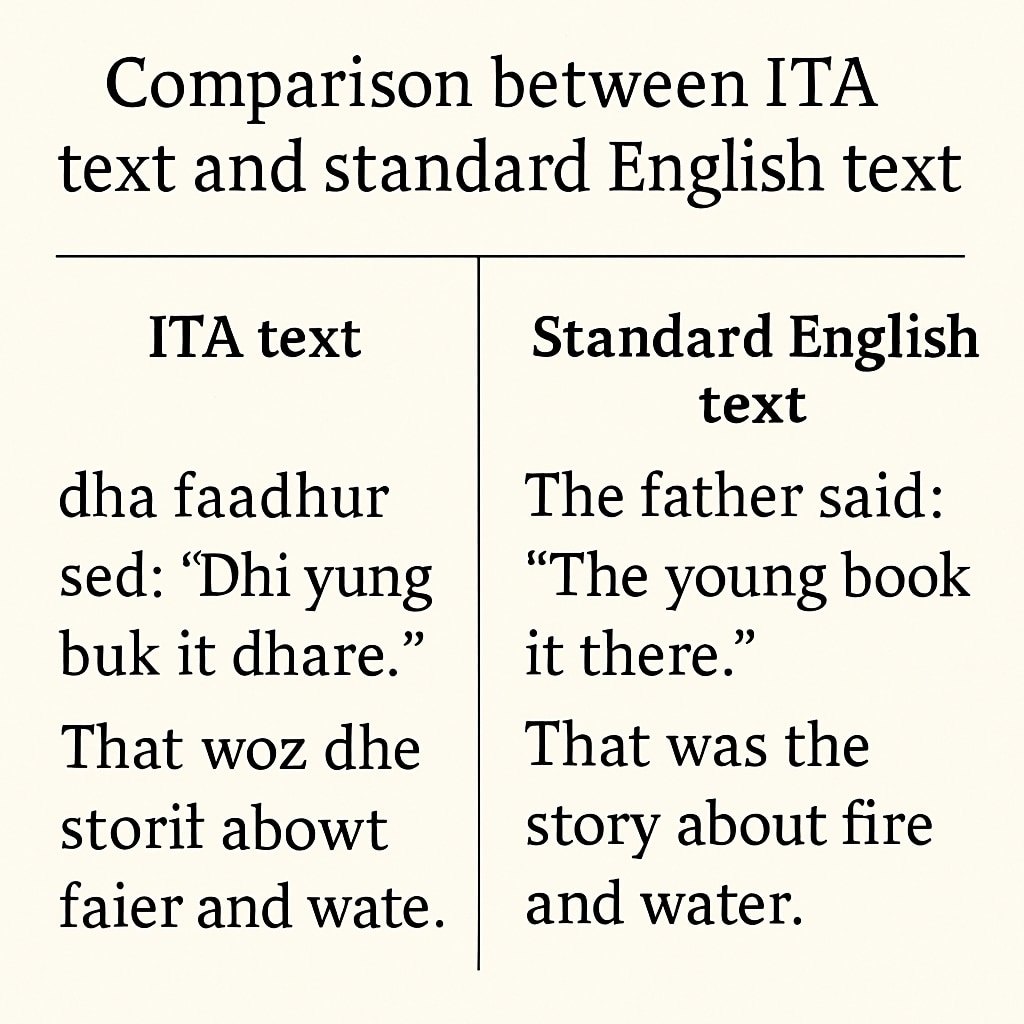The Initial Teaching Alphabet (ITA), a mid-20th century educational experiment, aimed to simplify the process of learning to read and write for young learners. By introducing a transitional alphabet with 44 phonetic symbols, educators hoped to bridge the gap between spoken and written English. While this innovative teaching method initially showed promise, its unintended consequences on long-term spelling proficiency have sparked debate. Could ITA inadvertently create obstacles for learners once they transition to standard English spelling?
Understanding the Purpose and Design of ITA
ITA was developed in the 1960s by Sir James Pitman as a phonetic alphabet designed to represent the 44 sounds of spoken English more accurately than the traditional 26-letter alphabet. The system introduced additional symbols to eliminate inconsistencies between English spelling and pronunciation. For example, ITA used separate characters for sounds like “sh” and “th,” which are often represented by digraphs in standard English.
The intention was to make reading and writing accessible to beginners by aligning written symbols closely with their corresponding sounds. This approach, in theory, reduced the cognitive load on students who might otherwise struggle with the irregularities of English orthography. As a result, ITA was adopted in classrooms across the UK and parts of the US, with early studies indicating that it could accelerate the acquisition of foundational literacy skills.

Long-Term Consequences: A Double-Edged Sword
Despite its initial success, ITA’s long-term impact on spelling proficiency has raised concerns. Once students transitioned from ITA to standard English, many experienced difficulties adapting to the complexities of conventional spelling. The phonetic simplicity of ITA, while beneficial for early learners, did not prepare students for the irregularities and exceptions inherent in standard English orthography.
Studies have reported that ITA learners often developed habits of over-reliance on phonetic spelling, leading to persistent errors in adulthood. For example, words like “enough” and “knight,” which deviate significantly from phonetic principles, became stumbling blocks for ITA-trained individuals. This over-dependence on phonetics and the additional step of transitioning from ITA to standard spelling may have inadvertently created lasting barriers for some learners.

Balancing Innovation with Practicality
While ITA undoubtedly aimed to simplify the learning process, its design overlooked the complexities of transitioning to a non-phonetic writing system. Critics argue that bypassing these challenges during early education may have delayed the development of essential coping strategies for managing English spelling’s irregularities. On the other hand, proponents of ITA maintain that its benefits in early literacy acquisition outweigh its drawbacks, especially for students with learning difficulties.
Modern perspectives on literacy education emphasize the importance of balancing phonetic approaches with exposure to standard orthography. For example, synthetic phonics—another widely used teaching method—also focuses on the relationship between sounds and letters but emphasizes a smoother integration with traditional spelling systems. By fostering early literacy skills without creating artificial transitions, these methods may offer solutions to the challenges posed by ITA.
Lessons for Future Educational Methods
The story of ITA serves as a valuable lesson for educators and policymakers. While innovative approaches can address specific challenges, they must also consider long-term outcomes. The key lies in designing teaching methods that not only simplify the learning process but also prepare students for the complexities of real-world language use.
As the debate around ITA continues, it underscores the need for evidence-based strategies that strike a balance between innovation and practicality. Whether ITA was a groundbreaking experiment or an unintentional barrier, its legacy has shaped how educators think about literacy and language education today.
Readability guidance: The article uses short paragraphs and clear transitions to enhance comprehension. Key points are summarized under subheadings, and relevant images are included to contextualize the discussion.


